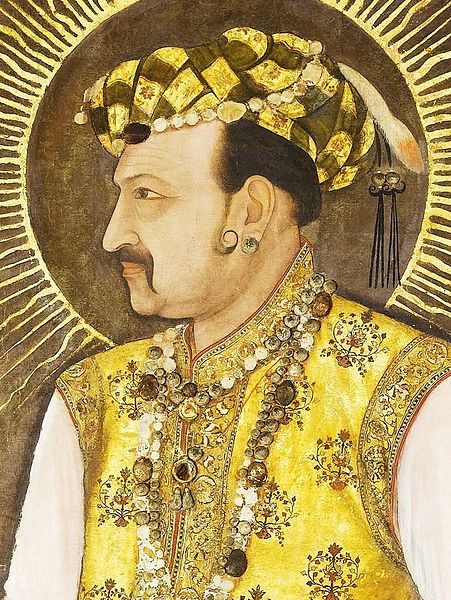The Battle of Plassey was a decisive victory of the British East India Company, under the leadership of Robert Clive, over the Nawab of Bengal and his French allies on 23 June 1757. Robert Clive was paid £1 million by the Jagat Seth family - a rich Indian family business group - to defeat Siraj-ud-Daulah. The victory was made possible by the defection of Mir Jafar, Nawab Siraj-ud-Daulah's commander in chief who was also paid by the Jagat Seths. The battle helped the British East India Company take control of Bengal in 1772. Over the next hundred years, they continued to expand their control over vast territories in the rest of the Indian subcontinent, including Burma.
Clive meeting Mir Jafar after the Battle of Plassey, oil on canvas (Francis Hayman, c. 1762)
The Mughal Empire's Nawab of Bengal Alivardi Khan adopted strict attitudes towards European mercantile companies in Bengal.
Robert Clive (1773), by Nathaniel Dance-Holland.
The Nawab's artillery on movable platform. A large stage, raised six feet from the ground, carrying besides the cannon, all the ammunition belonging to it, and the gunners themselves who managed the cannon, on the stage itself. These machines were drawn by 40 or 50 yoke of white oxen, of the largest size, bred in the country of Purnea; and behind each cannon walked an elephant, trained to assist at difficult tugs, by shoving with his forehead against the hinder part of the carriage.
The Bengal Subah, also referred to as Mughal Bengal, was the largest subdivision of the Mughal Empire encompassing much of the Bengal region, which includes modern-day Bangladesh, the Indian state of West Bengal, and some parts of the present-day Indian states of Bihar, Jharkhand and Odisha between the 16th and 18th centuries. The state was established following the dissolution of the Bengal Sultanate, a major trading nation in the world, when the region was absorbed into the Mughal Empire. Bengal was the wealthiest region in the Indian subcontinent.
Dutch East India Company factory in Hugli-Chuchura, Bengal by Hendrik van Schuylenburgh (c. 1665)
The Mughal absorption of Bengal initially progressed during the reigns of the first two emperors Babur and Humayun
Akbar developed the modern Bengali calendar
Dhaka, the capital of Bengal, was named Jahangir Nagar in honor of the fourth Mughal monarch Jahangir








